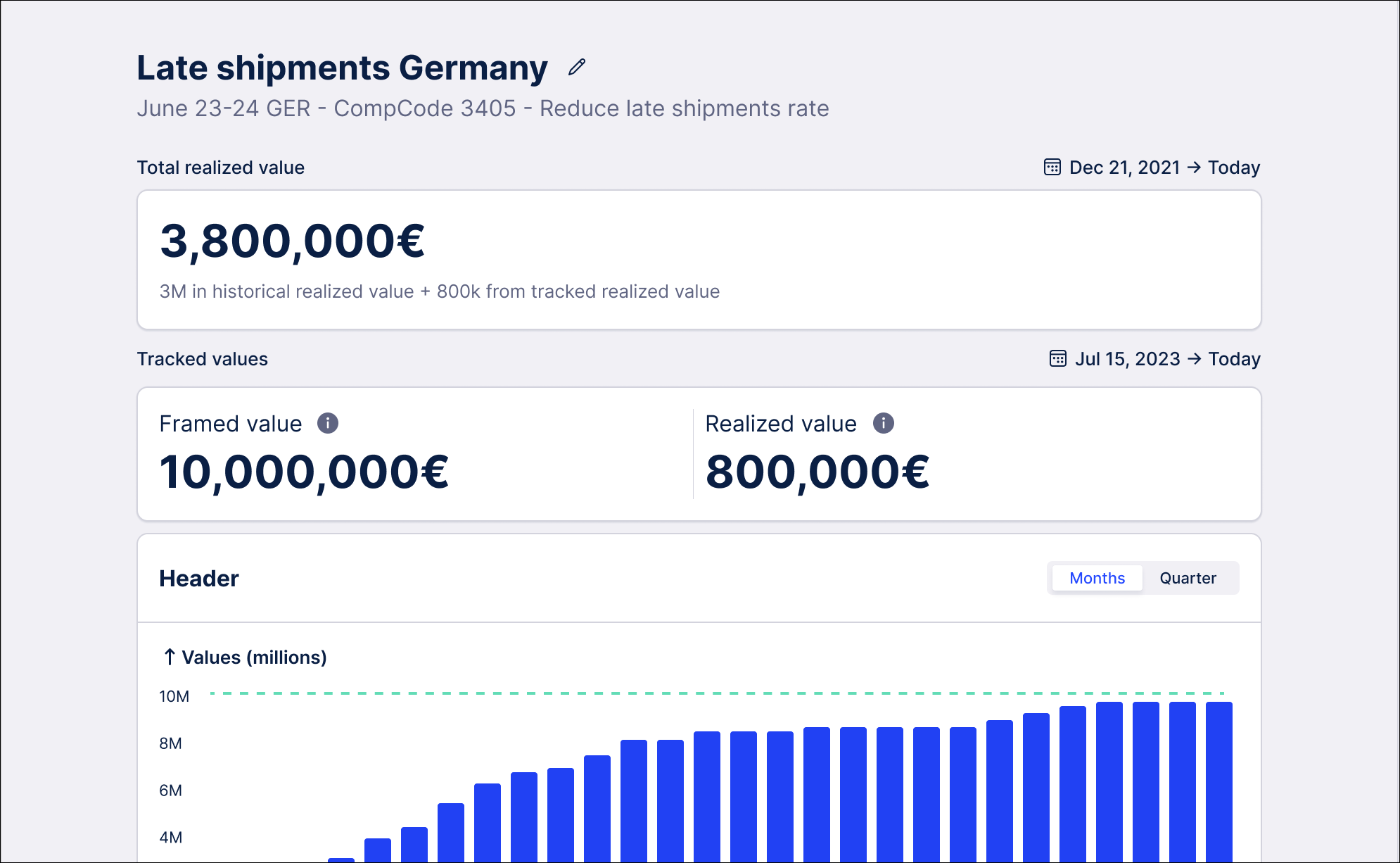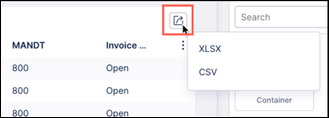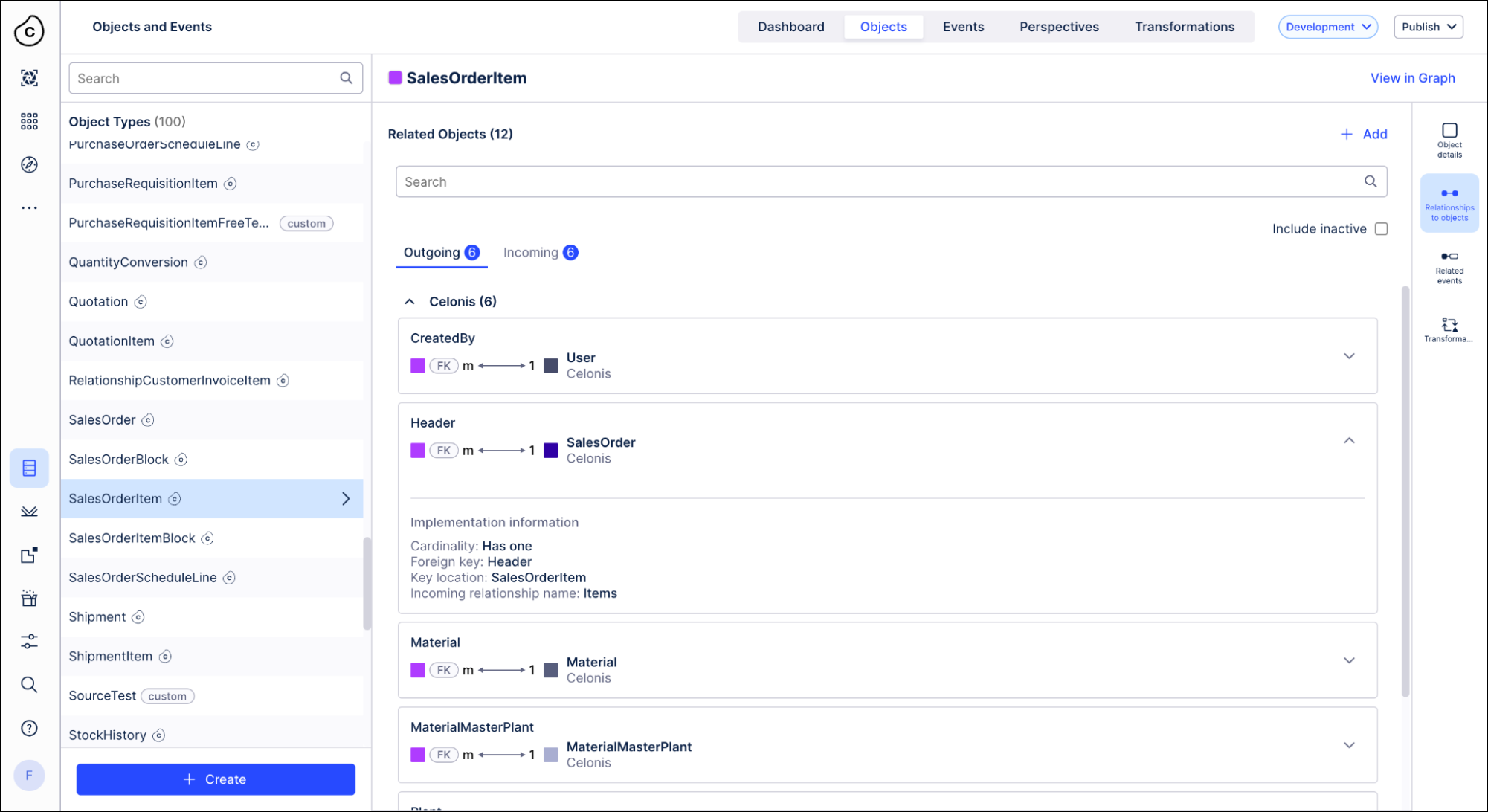February 2024 Release Notes
Knowledge Models (2024-02-22)
Lock KPIs from base Knowledge Models in extension Knowledge Models
You can now choose to lock the KPIs in a Knowledge Model when it’s used as a base Knowledge Model. Locking the KPIs makes them immutable in the extension Knowledge Model, so analysts working there can't change KPIs that are taken from the base Knowledge Model. They can only make edits if they are working in the base Knowledge Model. Locking the base KPIs ensures that your company-wide KPI definitions can only be altered by analysts with direct edit access to the base Knowledge Model.
You can lock an individual KPI, or all the KPIs in a Knowledge Model, when you're editing the base Knowledge Model. Any KPIs that you leave unlocked can be edited when they're used in an extension Knowledge Model, but locked ones can’t. To lock or unlock an individual KPI, toggle on the option Allow other analysts to edit KPI from extension KM. To lock or unlock all the KPIs in a Knowledge Model, use the lock icon in the top right corner of the Knowledge Model.
For the documentation on KPIs, see Knowledge Model - KPI.
Material Allocation App (object-centric) version 1.0.0 (2024-02-22)
Understand excess supply and uncovered demand and find inventory reallocation opportunities (Now in General Availability)
Our object-centric Material Allocation app for Inventory Management is now in General Availability status. The Material Allocation app uses constraint-based optimization and insights generated with object-centric process mining to identify opportunities for working capital optimization, through moving existing inventory from where it is not needed to where it is needed the most. The calculations take labor or transportation cost into account as well as any additional constraints specific to your business. Use the Bill of Material Explosion and Inventory Projection features to evaluate the impact and feasibility of your proposed re-allocations.
The object-centric Material Allocation app is the successor to the case-centric Material Shortages app, which is now deprecated. The Material Allocation app is a premium app, and is subject to an additional licensing fee. Talk to your Celonis account team to arrange this before you download the app.
To use the Material Allocation app you’ll need a Celonis license that includes object-centric process mining. The app needs some additional custom object types to enable its use cases, so you’ll need to create a custom Inventory Management perspective to use with the app in place of the supplied perspective. When you request the app in Marketplace we’ll provide a step-by-step guide for you to do this.
For the app documentation, see Material Allocation app - object-centric.
Inventory Management Control Center, Master Data Improvement, and Starter Kit (object-centric), version 1.4.0 (2024-02-22)
Streamlined calculations and enhanced quantity and currency conversion
Version 1.2.0 of these apps, released mid-January, was an early release to fix an issue with attribute references exceeding the platform’s character limit. We also streamlined the calculation for purchase and production lead times to reduce nesting, moved calculations for averages earlier in the process so they needn’t be duplicated, and combined some KPIs that were only used once in the Knowledge Model and weren’t used in views.
In version 1.3.0, released on 6 February, we updated the Quantity Conversion KPIs with the new QUANTITY_CONVERT PQL operator, and appended the existing Currency Conversion KPIs with enhanced operator syntax.
Version 1.4.0 updates the object types, event types, and relationships from the Celonis catalog to be compatible with version 1.1.0 of the catalog. Upgrade the apps to version 1.4.0 to keep them in line with our updates to the Celonis catalog types. If you’ve extended any of the Celonis object types and event types, we’ll apply your extensions to the updated types. If you’ve replaced any of the Celonis object types and event types with custom equivalents, we won’t make any updates to those. If you find you have two exact copies of a relationship, a custom one and a catalog one, delete the custom one in each case.
Transformation Hub (2024-02-16)
Add historical value to an opportunity
In Transformation Hub, you can now add and edit value that was already realized before you created an opportunity, or before the opportunity went live. Scroll to the end of the opportunity, and click Add to include historical realized value. Enter the amount of value and the estimated timeframe when it was realized, then click Save to add it to the opportunity.
You can add historical value to opportunities in both Draft and Live status - so you can use any value you realized before Transformation Hub was launched or before you created the opportunity there, including value recorded in other tools like spreadsheets, or value based on data that's no longer in Celonis. With this functionality, Transformation Hub's Value Report can now be a single source of truth that showcases all the value realized over the opportunity's lifetime - perfect for sharing with business stakeholders.

For the feature documentation, see Setting up Transformation Hub.
JDBC Extractor version 2.91.5 (2024-02-16)
Optimizer hints for Oracle databases
In this version of the JDBC Extractor we’ve added support for optimizer hints while extracting data from Oracle databases. We’ve also unified the three metadata retrieval approaches so that they all return consistent information. There’s some library updates, and our Windows installer executable is now signed with a Celonis certificate.
Oracle Fusion BICC Extractor (2024-02-15)
Extract from an OCI Object Storage bucket (Limited Availability)
The Oracle Fusion BICC Extractor can now pick up files from an Oracle Cloud Infrastructure (OCI) Object Storage bucket, as an alternative to Oracle UCM. You'll need a new or existing storage bucket that BICC connects to, and a user to authenticate with.
The BICC Extractor is in Limited Availability status. To get access as an early adopter, ask your Celonis point of contact.
Business Miner (2024-02-15)
Get started with a flat file using Quickstarts
With the help of our Quickstarts, you can now get started with Business Miner even if you don't have access to a Data Model, by uploading a flat file. When you've uploaded the data, we'll transform it and create a Data Model and Process Workspace for you, so you can get on with exploring your process.
When you're creating a Process Workspace, pick one of the additional options in the Data Model selection step to upload flat files from SAP or Oracle, or upload a CSV file or Microsoft Excel spreadsheet, or link a Google Sheet with an event log. For SAP and Oracle, if you don’t have the flat files, we’ll provide you with an extractor that you can run to produce the data you need.
For the Business Miner documentation, see Business Miner.
Workforce Productivity (powered by Task Mining) (2024-02-13)
Custom labeling for your Task Mining data (General Availability)
After our successful Limited Availability phase, we’re giving all customers of Workforce Productivity (powered by Task Mining) access to our no-code label editor to create custom labels for processed Task Mining data. Since the LA release, we’ve added a new user interface for previewing your labels.
From 7 February, whenever you create a new project, you’ll be able to use custom labels to apply your own readable and meaningful application and screen names. We've also reduced the number of default labels, and reformatted and reviewed them for quality. You can create and manage labeling rules in the no-code editor. Your existing projects will keep their data processing strategy and labels.
For the documentation for labels, see Label Editor.
ServiceNow Extractor (2024-02-12)
Improved retry and duplicate removal
We’ve made some improvements to the ServiceNow Extractor’s behavior in two areas:
If fewer records than expected are retrieved from the API, because of row-level permissions on specific tables, the Extractor no longer retries the specific requests. You’ll see a significant improvement to the extraction time in this situation - previously the Extractor was retrying five times with a one minute wait in between.
When the rolling page size is set to 0 (the default is 5), the Extractor now removes duplicate records during the ingestion process as well.
You don’t have to make any changes to get these benefits - we’ll apply them for your existing extractions.
Studio (2024-02-09)
Export data from table components (Limited Availability Program for Studio)
When you create a table component in the new Studio experience, you can choose the new interaction option Allow exporting from table to let your end users export the data they see in the table. They can choose from two file formats, a Microsoft Excel spreadsheet (.xlsx) or comma-separated values (.csv). For the instructions to set this up, see Configuring tables.

Duplicate Invoice Checker (case-centric) version 2.2.0 (2024-02-09)
Customize the duplicate checking algorithm
Algorithm customization is generally available with this release of the Duplicate Invoice Checker. Everyone can now customize the duplicate checking algorithm in the app's Knowledge Model to define custom patterns that determine a match. You can specify the columns that are checked for each pattern, perform multiple exact and fuzzy matches in the same pattern, and adjust the sensitivity parameters for fuzzy matches.
We've also made a number of other smaller enhancements with this release, including adding more details about invoices in the profile view, and some improvements in the Knowledge Model.
For the app documentation, see Duplicate Invoice Checker.
Object-centric process mining (2024-02-09)
Global search on the Objects and Events Dashboard
We’ve added a global search function to the Dashboard that lets you search across all the entities in your object-centric data model - object types, event types, transformations, and perspectives. You can use it to locate entities when you aren’t sure whether they’re objects or events, and to find all the entities containing a specific keyword. Click on any search result to go to the appropriate area of the Objects and Events environment and view the details of the entity.
To get to the Dashboard, in the Celonis navigation bar, select Data > Objects and Events, then select Dashboard in the top navigation bar. For the object-centric process mining documentation, go to Object-centric process mining overview.
Object-centric process mining (2024-02-08)
Simpler modeling for relationships
We've redesigned the Objects and Events user interface to give you more guidance when you're modeling custom object to object relationships and event to object relationships:
The list of relationships for an object is now divided into outgoing relationships, where the foreign key or join table is to be implemented on this object, and incoming relationships, where the foreign key or join table is to be implemented on the other object. You can click any relationship to view the implementation details and the location of the transformation. You can also show inactive relationships that the object has for processes that you haven’t enabled yet.
When you create a relationship between two object types, we now automatically create the relationship in the other direction as well. If you don't want a bidirectional relationship, you can delete it.
We've combined the options for the relationship's cardinality with the choice of where and how to handle the relationship data in your transformations, so it's clearer what to choose and what you'll need to do afterwards.
Your choices for the cardinality of a custom relationship are now many to one (m:1), one to many (1:m), many to many (m:n) with the relationship table as a join table on the source object, or many to many (m:n) with a join table on the target object. We've removed the choice of a one to one (1:1) relationship, as the object-centric data model and the underlying database don't enforce uniqueness of a foreign key. Any custom one to one relationships already in your object types will continue to exist.
For the modeling documentation, see Modeling objects and events.

Business Miner (2024-02-07)
Export an Exploration as a Studio package
If you want to go deeper into the details of an Exploration in Business Miner, you can now convert it into a Studio package. As long as you have permission to create packages in Studio, you can select Export to Studio in Business Miner, pick a Studio space, and name the new package. You'll get a view for each question, and a Knowledge Model with all the definitions, which you can edit and extend like any other Studio package. For the instructions, see Export to Studio.
Note
At the moment, packages exported from Business Miner use Studio’s general availability feature set. We’re working on letting you export to the new Studio experience - when that’s ready, if you’re part of the Limited Availability Program for Studio, the Export to Studio button will create a package using the new feature set.
Unshipped Orders app (case-centric) version 1.0.0 (2024-02-01)
Manage deliveries that are past the delivery date (Limited Availability)
Our new Unshipped Orders app lets you identify and manage deliveries that are still in your distribution centers waiting to be shipped past the planned delivery date. Deliveries in this state (which can total millions of dollars' worth) lead to unrealized revenue, blocked warehouse spaces, and declining customer satisfaction. To mitigate these challenges, the Unshipped Orders app helps warehouse managers and customer sales representatives to take action on overdue deliveries, such as contacting customers or carriers to expedite the transport process, canceling orders to unblock blocked materials, or effectively processing materials where they are stuck, for a fast and direct financial impact. For the full documentation, see Unshipped Orders app - case-centric.
The Unshipped Orders app is built for the case-centric version of the Order Management business process. You can download it from the Celonis Marketplace - it’s in Limited Availability status, so click Request Access to request the package. When we’ve approved your request, go back to Marketplace, and the button will say Get it now, so you can download the package.